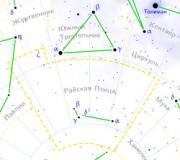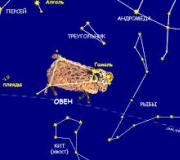DIY balloon column stand balloon column tutorial. How to make compositions from balloons with your own hands? How to make poles from balls without a frame
How to make a chain of balloons and an arch of helium balloons - watch the video tutorial on aerodesign from Anatoly Piksaev. In this tutorial I will show you how to make a chain of balloons and an arch of helium balloons. There are also two options for decorating the arch. © Anatoly Piksaev Video information Source: aerodesign lessons from Anatoly Piksaev. […]
How to make a stork from balloons and modeling balls (BBM) - watch the video tutorial on aerodesign from Anatoly Piksaev. Balloons used: 10″ (or 9″, or 12″) black – 9 pcs. 10″ (or 9″, or 12″) white – 4 pcs. ShDM 260 pink – 3 pcs. ShDM 260 white - 1 pc. 5″ white – […]
For information on LED modules for balloons, watch the video tutorial on aerodesign from Anatoly Piksaev. “LED modules for balloons, 3D modules, LED bullet module - what is their difference. Pros and cons of LED modules for balls. And also safety precautions when working with LED modules for glowing balls.” © Anatoly Piksaev Information about […]
We will need balls with a diameter of 20-25 cm (10 or 12 inches). For 1 meter of garland with a diameter of 20 cm you need 28 balls, with a diameter of 25 cm - 24 balls :)

Inflate the balloons (the balloons in this garland are filled with regular air). It is important to learn how to tie a ball correctly. You need to tie the ball yourself, so to speak, i.e. make a knot with the neck of the ball itself. A little practice and the balls will learn to obey you :)
To prevent the balloon from deflating the next day, you must first of all have a workplace that is free of small debris. Even dust from drywall and ceiling tiles is scary for balls, and what about wood shavings or small fragments from broken glass...

It is necessary to calibrate the balls to the same size. To do this, we need to make a calibrator with the dimensions necessary for the garland (we have a homemade chipboard calibrator with set dimensions of 5, 10, 15, 20, 25 cm). Here is an example of making a 25 cm garland. The calibrator can successfully replace any container (bucket, pan with the required diameter)

Balls must be strictly calibrated in size. We are used to calibrating along the long side of the ball - from the crown to the tail.
But professional aero designers recommend doing calibration by inserting the ball vertically into the groove of the calibrator (rev. 11/20/11)

We tie the calibrated balls together in pairs. There is no need to tighten the balls under any circumstances :) We tie the balls with their necks facing each other in pairs, then we simply twist the pairs together and get a link of 4 balls.

It is better to use high-quality balls made in Italy, Belgium, Colombia, Mexico or Portugal. Chinese-made balls, unfortunately, are more than 50% defective. High-quality balls are made of natural latex, thanks to which the rubber stretches easily.

We should get blanks like this - twos. Important point: Floors must be clean, free of shavings, sand and dirt. This photo shoot took place in extremely unfavorable conditions for the balloons. Please take into account the remark regarding the cleanliness of the surface, because... the lifespan of the balls depends on this

We twist the resulting twos together, in the end you should get this link - the main component of the garland.

Like this.

It is better not to knit in threes, the garland will not be stable. Let's say, if you need to make a tricolor garland, then we make a four of: white, blue and 2 red balls.
To tie the garland we need to prepare a rope. Regular laundry will do. It is not advisable to use fishing line and nylon thread due to the high probability of cutting the latex when tensioned.

The end of the rope must be tied to something.

We begin to string the links from the balls onto the rope. In this case, the rope must be twisted between the balls, making one turn around each ball. The links should fit tightly, but the rope should not be tightened in any way, as this can damage the balls.

Like this.

We place the next link close to the first in a checkerboard pattern. This way we get a spiral pattern.

And so on one after another. It is important not to break the sequence of the drawing.

Like this.

Link by link they line up into a beautiful garland. If balls of the same color are placed diagonally, it will look like separate turns; if these balls are placed next to each other, it will look like a double turn of one color and smaller turns of another color.
We make a garland of the required length. When inflating balloons with a diameter of 20 cm, there should be 7 links of 4 balloons in 1 meter of garland. When inflating 25 cm balloons, there are 6 links of 4 balloons each.
It is advisable to carry out outdoor installation in calm weather, with the help of 2-3 assistants, trying to make fastenings on surfaces with less sharp corners.
On the street, the finished garland can be attached to the fence only with a rope (clothesline), indoors - with a fishing line, or, as a last resort, decorative tapes: the garland must be tied to a rope or fishing line to a nail, screw or something that can be grabbed onto. It is better not to use adhesive tape as a means of fastening at all.
Remember that a garland hung outside will last much less than one installed indoors. During installation, it is advisable to have spare balloons available in case the balloon in the garland bursts.
View of the finished and mounted garland

Good luck in your endeavor!
2. MK Column of balls

balls 12" (25 cm) of course it is better to use high-quality balls, here, for example, balls made in Belgium were used

a special device called a compressor

you can use a pump, preferably a two-way one (we started with these ourselves :)

inflate 2 balls, set the size (putting it into a bucket or pan so that all the balls are the same size) and tie them together with tails

We tie the balls with tails, without the use of any threads, ropes, etc. It’s better, of course, to do it without nails :)

It should look like this. making a second one like this

And we scroll both twos together (you can clockwise, you can counterclockwise, but strictly in one direction 2-3 times)

this four will become the basis of our column, so it needs to be weighted. to do this we must fill a regular ball with tap water and simply tie it to the tails of the ball

or just put this ball of water in the recess between the balls

We begin to place the prepared fours on top of each other in a checkerboard pattern and twist each other with a rope (it is enough to twist each ball in the link 2 times)

like that

the column is ready!
we decorated the column a little by adding small balls and balls for modeling, it turned out pretty good, didn’t it?;) I tie small balls separately, i.e. I tie each ball into a knot, tie a small piece of tape to the knot, even better if it is a shdm (ball for modeling), make a loop around 1-2 balls (of which the column link is made) and in a parallel free groove (I don’t know what else to call this recess or free space between the large balls) I fix the second small ball of the same size.
All the best to everyone!
Instructions for making balloon stands for foil numbers
Let us describe a method for creating stands from balloons on which foil numbers are installed. The instructions use latex balloons manufactured by Sempertex (Colombia) and a foil number manufactured by Flexmetal (Spain).
This article serves as an explanation for the stands (tab:) described in the Aerodesign Pattern Constructor.
Making a Type A stand
From 12" balloons, we inflate and calibrate two pairs of balloons to 25 cm in diameter.
Let's twist these twos together and get four balls calibrated to a diameter of 25 cm
Similarly, from 10" balls, we will make four balls, calibrated to a diameter of 21 cm.
We will tie a ribbon to the center of the four 25 cm balls (ribbon is a ribbon used for tying helium balloons). We simply wrap the end of the braid several times around the center of the four relative to one of the balls of the four (the first), then we wrap the braid several times around the second ball of the four and then wrap it several more times around the first ball. This way, the braid will be securely fixed relative to the center of the first cluster of the stand.
We press the center of a cluster of 21 cm balls to the center of a cluster of 25 cm balls (but not until they touch each other!) and with a stretched braid we wind the two clusters together so that the braid is wrapped at least 4 times between the centers of the clusters. The scheme is as follows: the braid goes around the center of the top four, and wraps around one of the balls of this four several times, then the braid returns and goes around the center of the bottom four and returns to the center of the top four, and everything is repeated.
Fill a 5" ball with water and create a weight (weight) for the stand.
We tie a weight to the bottom of the four balls (which is 25 cm). To do this, we wrap the necks of the weight several times around the center of the lower four, around several balls of this cluster.
Let's inflate a foil figure with air - a number, produced by Flexmetal. The height of such an inflated figure is 86 cm.
Using tape, glue a couple of ends of the braid to the bottom of the foil figure, to the left and right of the neck of the foil figure. The tape is glued across the seam of the figure, the braid is glued along the seam of the figure.
The tape and tape must be glued symmetrically relative to the neck of the foil number.
The figure is pressed against the center of the upper four balls (to the upper cluster), and the braid glued to the figure is twisted relative to the center of the upper cluster, both to the left and to the right.
If you plan to strengthen the figure at an angle to the vertical, then you can glue the ribbon to the bottom of the figure asymmetrically.
Weddings and birthdays are usually celebrated on a grand scale, decorating the place of celebration in every possible way. Designers often suggest building an arch out of balloons. It’s quite possible to do it yourself, but it will take a lot of time. The decoration can be created from helium or simple balloons, securing them to a grid or arc in the shape of a rainbow.
To make an arch out of balls with your own hands, you need to prepare materials - a pump, wire, metal cutters, buckets of gravel or cinder block. You can buy the frame or make it yourself using thick wire . Step-by-step instructions for creating jewelry:

Thus, you need to make an arch of balls with your own hands, securing new products above the previous ones. The process must be continued until the wire is completely filled.
If desired, the frame of the ball arch can be made from poultry house mesh. To do this you need:

Creating an air arch
You can make an arch out of balloons filled with helium. Fishing line or white thread is used as a frame. Procedure:

Add contrasting ribbons to the balls, securing them at the base. You can create a curly effect by running sharp scissors along the ribbons. The cargo is decorated in the form of a gift, painted with aerosol or acrylic paint.
Ideas for decorating the base
You can decorate the base of the arch with flowers made from balloons . To do this, you must adhere to the following algorithm of actions:

To completely decorate the base, you will need about 10 flowers. There will be empty spaces at the ends of the arch that need to be filled. To do this, 4 balls with a diameter of 21 cm are inflated and fixed on the base. At the end of the work, the flowers should be straightened.
Flowers to decorate the base can be made from long balls. The procedure in this case is as follows:

Daisies from balls
This option is called “twisted daisy”. To create such a flower, you need to take 2 balls (size 260) of orange and yellow colors for the petals, 1 green for the stem and 1 white for the core. Chamomile is made as follows:.










